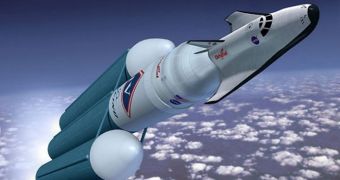Ever since the American space agency introduced the Commercial Crew Development program (CCDev 2), numerous companies, either established or now-forming, have begun production, or at least developed plans to do so, of spacecraft capable of reaching our planet's orbit.
Just a few years ago, something like this would have seemed implausible. There were only a few established entities that could exceed escape velocity, such as for example space agencies and a couple of private companies.
Now, all of this is changing. Just two weeks ago, Hawthorne, California-based SpaceX launched its unmanned Dragon space capsule into space aboard its own Falcon 9 delivery system, and managed to recover the spacecraft from the ocean just hour afterwards.
Its main competitor, with which it races under the NASA Commercial Orbital Transportation Services (COTS) program, is Virginia-based Orbital Sciences Corporation, which is working on developing the Cygnus space capsule and the Taurus II delivery system.
But, while these two corporations have already proven their worth, there are many aerospace companies out there that seek to develop space taxis and to enter the space tourism business.
While some companies want to do this for the money or the prestige, NASA wants to support it so that it can win unlimited access to the $100 billion International Space Station (ISS).
For the first time in history, the United States will be left without orbital capabilities once the space shuttle are retired in mid-2011. At exact date is not yet known, Universe Today reports.
This is why SpaceX and OSC, as the companies most advanced in their investigations, have received billions of dollars in NASA funding thus far, and more will come if they succeed.
But the Crew Space Transportation-100 (CST-100) spacecraft, developed by Boeing, is starting to catch up with Dragon and Cygnus, and will most likely join the elite soon.
Virgin Galactic, a company now preparing to start conducting commercial suborbital spaceflights for paying tourists, is also aiming a little higher, and wants access to orbit itself.
But don't forget the Dream Chaser, a spacecraft developed by the Sierra Nevada Corporation, which is being constantly upgraded and improved, while details of its characteristics are kept under wraps.
Denver-based Lockheed Martin is also involved in the effort indirectly. Experts here are developing the Orion Crew Exploration Vehicle, which was originally meant to serve NASA's Project Constellation.

 14 DAY TRIAL //
14 DAY TRIAL //